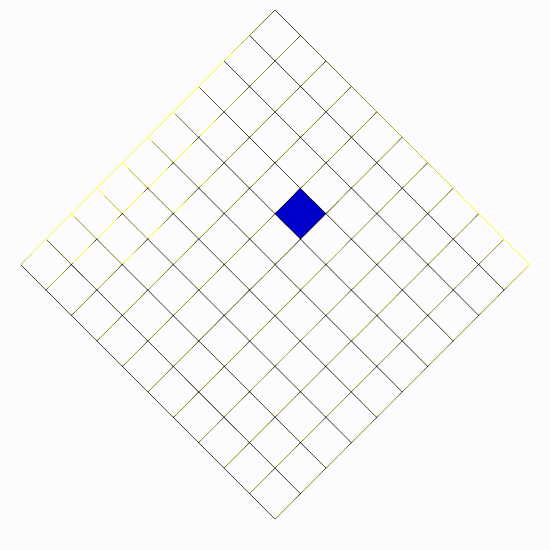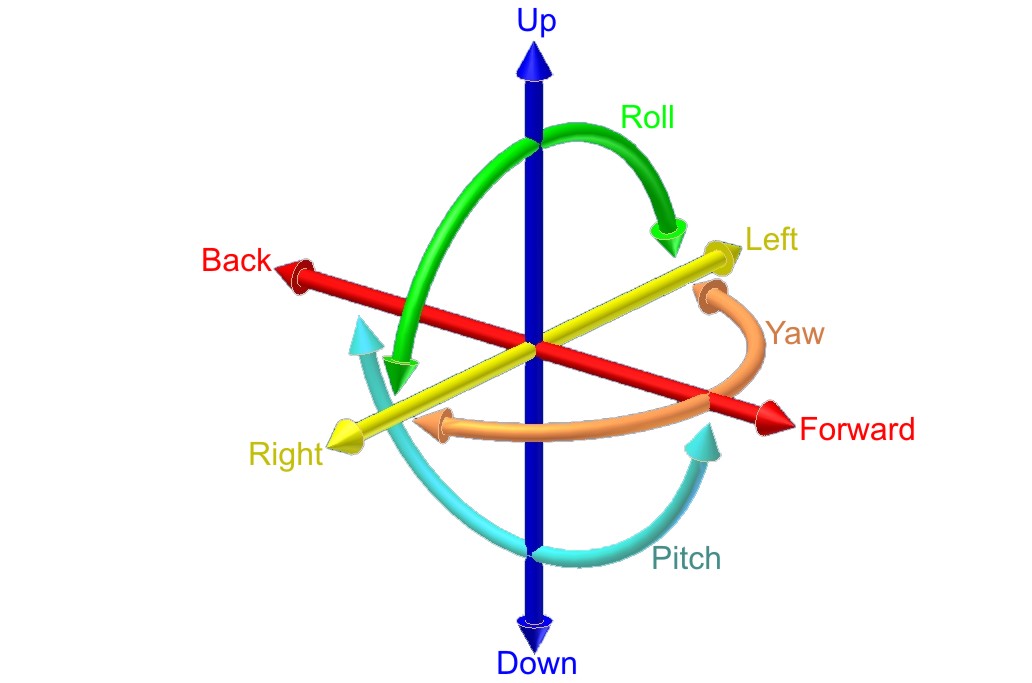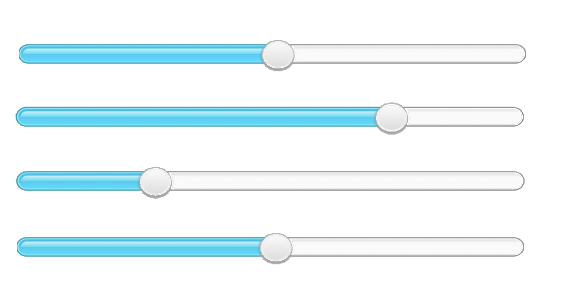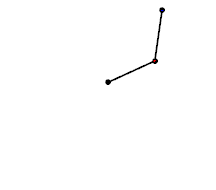cas/definition/feature.php (core concept)

Degrees of Freedom
'Degrees of freedom' is the way to describe the potential range of behaviors available within a given system. Without some freedom for a system to change its state, no complex adaptation can occur.
Understanding the degrees of freedom available within a complex system is important because it helps us understand the overall scope of potential ways in which a system can unfold. We can imagine that a given complex system is subject to a variety of inputs (many of which are unknown), but then we must ask, what is the system's range of possible outputs?
The notion of degrees of freedom comes to us from physics and statistics, where it describes the number of possible states a system can occupy. For example, a swinging pendulum is constrained to a fixed number of 'states' (positions in space) that the pendulum can occupy. We can imagine that it is possible to map out all the potential locations of the pendulum's swing, and therefore the limits of all it behaviors. The degrees of freedom thus tells us something about what a system is capable of doing: it's potential. The system cannot act outside of the boundaries of this action potential.
For example, if we wanted to examine the maximum capacity of motion for a three-dimensional object in space, this can be provided using just six degrees of freedom, which together define changes both in orientation: (rotation) that occurs via the 'roll', 'yaw' and 'pitch' motions; and for changes related to displacement in space: through the 'up/down', 'back/forward' and 'left/right' parameters. We can see that all potentialities of movement are covered within this framework.
If we were to eliminate any of these parameters - for example the 'up/down' potential, then we have fewer degrees of freedom, certain types of movement would no longer be possible. Phase Space - thereby captures the sum total of all potential behaviors - sometimes referred to as a system's 'possibility space'.

(image courtesy of Wikimedia commons)
In addition to there being a range of phase space potentials, there may also be particular behaviors in phase space that are more likely to occur. Accordingly, if we were to map all of the potential states of a pendulum's behavior from any given starting position in phase space, we would have what is known as a 'phase portrait' of that pendulum. This is to say that there are particular trajectories that the pendulum will follow within phase space. Different systems might have phase portraits that highlight certain special regions of phase space as being Attractor States which a system will tend to gravitate towards.
Human Systems
So far we have been speaking about physical degrees of freedom, but we might also imagine degrees of freedom in relation to behavioral possibilities.
Example:
Imagine we are wanting to stay at an airbnb. We could think of each airbnb option as being an agent in a complex system, competing to win us over by broadcasting its 'fitness' for our stay. Each Airbnb would be able to adjust a number of parameters that one might consider as important in choosing accommodation. These parameters could include cost, cleanliness, distance to center, size, and quietness. Different people might value (or weigh) these parameters differently, and choose their airbnb accordingly. At the same time, we can imagine that each airbnb has a capacity to adjust its 'state' to different degrees. Location is clearly a limited parameter: a given airbnb has no capacity to simply change its location. But it does have the capacity to adjust its price point. Size is also difficult to alter. But cleanliness might have more flexibility. Thus certain categories have more range in terms of their degrees of freedom than others. If airbnbs are considered as agents in a complex system, each competing to find patrons who wish to stay at their location, then they each have to operate within their particular bounds of freedom in terms of how they adjust to align themselves better with user needs. Thus if they can't compete on the basis of location then they can attempt to compete on the basis of cost.
More Than Three Dimensions - No Problem!
The airbnb case should also serve to illustrate that, in many scenarios, the degrees of freedom available to an agent in a complex system cannot be easily plotted in three dimensional space (that is a 'space' bounded by an x, y, and z axis). That said, just because phase space cannot always be easily visualized in three-dimensional space, it doesn't mean we have to bend our minds to imagine more than 3 degrees of freedom. Just because we can't easily draw a graph of all these potential parameters, we can certainly imagine sorting different priorities simply as parameter bars with weights. We then have a multi-parameter space that the agent is calibrated within.
Multiple Degrees of Freedom thought of as sliding parameter bars:

Requisite Variety
Analyzing agents in complex system according to their Degrees of freedom can thus be thought about as examining their range of possible parameter settings. This can be an extremely helpful way of thinking about the {{adaptive-capacity}} of the system: or what it can and cannot do in response to environmental changes or fluctuations. Another way to describe this is the idea of a system's Requisite Variety: a phrase coined by Ross Ashby to highlight the amount of variability a system can enact. According to Ashby, a system needs to have a variety of responses commensurate with the variety of inputs. This responsive capacity can be defined more precisely by means of defining the agent's degrees of freedoms.
Back to Core Concepts
Back to Navigating Complexity
Cite this page:
Wohl, S. (2022, 3 June). Degrees of Freedom. Retrieved from https://kapalicarsi.wittmeyer.io/definition/degrees-of-freedom
Degrees of Freedom was updated June 3rd, 2022.
Nothing over here yet
This is the feed, a series of related links and resources. Add a link to the feed →
Nothing in the feed...yet.
This is a list of People that Degrees of Freedom is related to.
Cybernetics | Law of Requisite Variety
This is a default subtitle for this page. Learn more →Building Blocks | Santa Fe
John Holland is considered one of the seminal thinkers in Complex Adaptive Systems theory.
Learn more →Topology | Bifurcations
This is a default subtitle for this page. Learn more →On Growth and Form
Caramelization half and half robust kopi-luwak, brewed, foam affogato grounds extraction plunger pot, bar single shot froth eu shop latte et, chicory, steamed seasonal grounds dark organic. Learn more →epigenesis
Caramelization half and half robust kopi-luwak, brewed, foam affogato grounds extraction plunger pot, bar single shot froth eu shop latte et, chicory, steamed seasonal grounds dark organic. Learn more →Manifolds
This is a default subtitle for this page. Learn more →Reaction/Diffusion | Computation
diffusion model spots Learn more →This is a list of Terms that Degrees of Freedom is related to.
For a system to adapt, it needs to have variables to adjust.
See also: Requisite Variety
Learn more →This term is used by relational/assemblage philosophers to speak about the 'space of possibilities'.
'The Virtual' is a term used by Deleuze and Guattari that parallels the idea of {{phase-space}}. The Virtual alludes to aspects of reality that may or may not manifest, depending on how a system comes to be activated. Learn more →The quantity and breadth of a system's adaptive potential is its 'requisite variety'.
In order for a complex system to adapt, it needs to contain agents that have the capacity to behave in different ways - to enact adaptation you need adaptable things. Learn more →Phase space is an abstract concept that refers to all possible behaviors available to an agent within a complex system.
Related to {{degrees-of-freedom}}. Learn more →A notion in Landscape Urbanism that relates to the notion of an environment's potentiality to be activated in different ways;
can be thought of as connecting to phase space in physics, or the space of possibilities Learn more →The idea that systems can have more than one stable state.
Early versions of systems theory assumed that systems could be 'optimized' to a single condition. CAS analysis assumes that more than one system state can satisfy optimizing criteria, and so the system is able to gravitate to multiple equilibria.
Learn more →A particular topological space that a system can occupy
This is a default subtitle for this page. Learn more →The idea that many possible states or historical trajectories could have equally unfolded
Beyond its day-to-day usage, this term used in now employed in the social sciences to highlight the Path Dependency exhibited in many social systems. This is seen to contrast with prior conceptions like "the march of history", which imply a clear causal structure. By speaking about the work as something contingent, it also begs the question of what other "worlds" might have just as equally manifested, had things been slightly different.
Similar ideas are captured in the ideas of Non-Linearity, {{sensitivity-to-initial-conditions}}, History Matters.
Pictured below: the contingent trajectory of the double pendulum:

Learn more →
This is a list of Urban Fields that Degrees of Freedom is related to.
New ways of modeling the physical shape of cities allows us to shape-shift at the touch of a keystroke. Can this ability to generate a multiplicity of possible future urbanities help make better cities?
This is a list of Key Concepts that Degrees of Freedom is related to.
Complex systems are composed of agents governed by simple input/output rules that determine their behaviors.
One of the intriguing characteristics of complex systems is that highly sophisticated emergent phenomena can be generated by seemingly simple agents. These agents follow very simple rules - with dramatic results.
Learn more →Navigating Complexity © 2015-2025 Sharon Wohl, all rights reserved. Developed by Sean Wittmeyer
Sign In (SSO) | Sign In
Related (this page): Bottom-up Agents (22), Rules (213),
Section: concepts
Non-Linearity Related (same section): Tipping Points (218, concepts), Path Dependency (93, concepts), Far From Equilibrium (212, concepts), Related (all): Urban Modeling (11, fields), Resilient Urbanism (14, fields), Relational Geography (19, fields), Landscape Urbanism (15, fields), Evolutionary Geography (12, fields), Communicative Planning (18, fields), Assemblage Geography (20, fields),
Nested Orders Related (same section): Self-Organized Criticality (64, concepts), Scale-Free (217, concepts), Power Laws (66, concepts), Related (all): Urban Modeling (11, fields), Urban Informalities (16, fields), Resilient Urbanism (14, fields),
Emergence Related (same section): Self-Organization (214, concepts), Fitness (59, concepts), Attractor States (72, concepts), Related (all): Urban Modeling (11, fields), Urban Informalities (16, fields), Urban Datascapes (28, fields), Incremental Urbanism (13, fields), Evolutionary Geography (12, fields), Communicative Planning (18, fields), Assemblage Geography (20, fields),
Driving Flows Related (same section): Open / Dissipative (84, concepts), Networks (75, concepts), Information (73, concepts), Related (all): Urban Datascapes (28, fields), Tactical Urbanism (17, fields), Relational Geography (19, fields), Parametric Urbanism (10, fields), Landscape Urbanism (15, fields), Evolutionary Geography (12, fields), Communicative Planning (18, fields), Assemblage Geography (20, fields),
Bottom-up Agents Related (same section): Rules (213, concepts), Iterations (56, concepts), Related (all): Urban Modeling (11, fields), Urban Informalities (16, fields), Resilient Urbanism (14, fields), Parametric Urbanism (10, fields), Incremental Urbanism (13, fields), Evolutionary Geography (12, fields), Communicative Planning (18, fields),
Adaptive Capacity Related (same section): Feedback (88, concepts), Degrees of Freedom (78, concepts), Related (all): Urban Modeling (11, fields), Urban Informalities (16, fields), Tactical Urbanism (17, fields), Parametric Urbanism (10, fields), Landscape Urbanism (15, fields), Incremental Urbanism (13, fields), Evolutionary Geography (12, fields),
